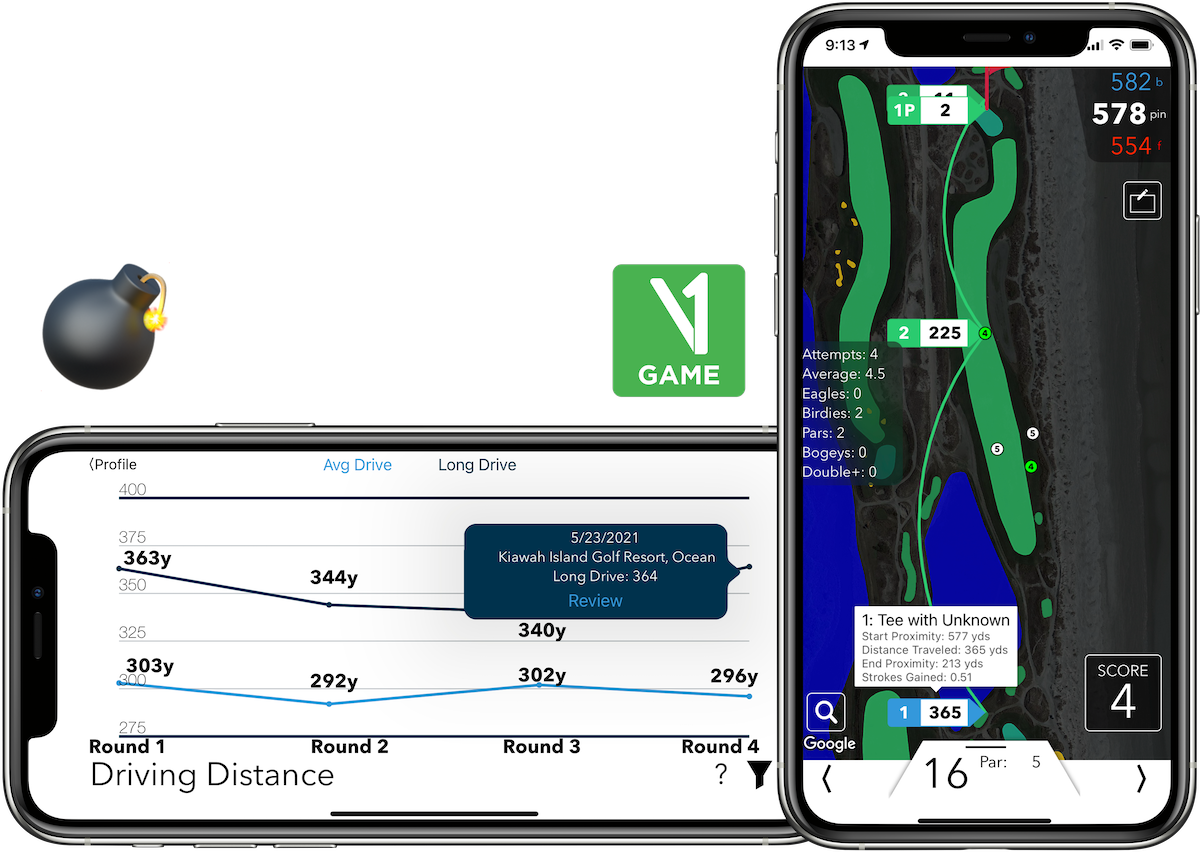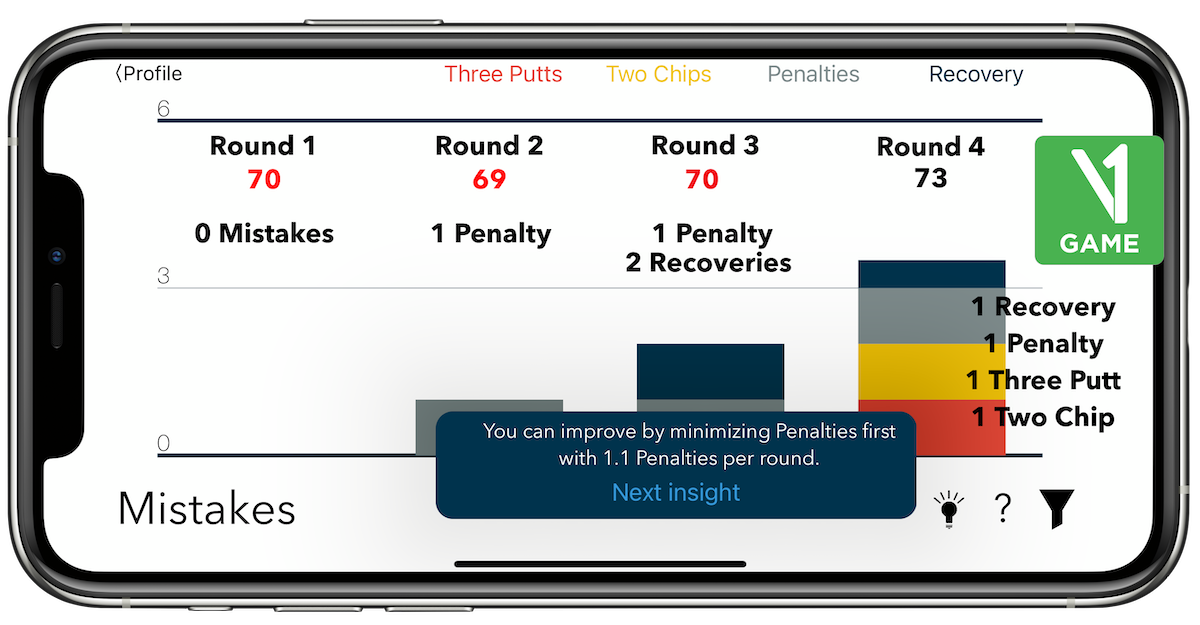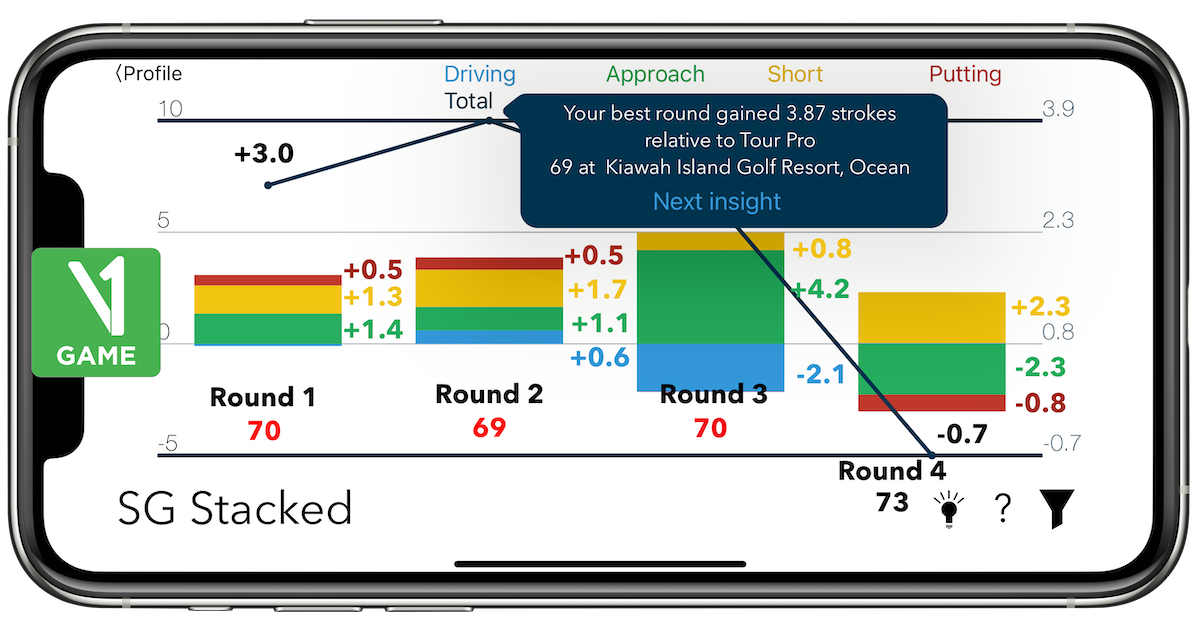Opinion & Analysis
Ways to Win: Focused Phil does anything but flop at the PGA Championship

That was fun. Through 55 holes, it looked like Brooks Koepka was ready to return from injury and establish his dominance with three wins in four years at the PGA Championship. Instead, his putter went dead cold and Phil Mickelson did the improbable.
Despite having poor form in recent weeks, Mickelson felt like he was on the verge of a breakthrough. He spent much of his recent practice working on focus. Staying present in the moment. In the end, golf is a mental game where a single uncommitted swing or distraction can lead to disaster and cost a tournament. There is no doubting Mickelson’s tremendous talent, but he is notorious for losing focus at the worst possible moment. Not this time. Between his practice and timely advice from his brother and caddie, he was able to remain dialed in down the stretch and outlast a star-studded leaderboard to win the PGA Championship at 50 years old. Incredible.
So, how did he do it? Well first, he hit bombs.

Mickelson has been all over social media discussing his “hellacious seeds” and “bombs.” Over the past several years, he put in a tremendous amount of work to go from average in terms of swing speed on the PGA Tour to fast. All of this at 50 years old. While this has separated him from fields on the Champions Tour, it has been difficult for Mickelson to keep it in play on the PGA Tour. Not this week. Mickelson may have only finished 29th in terms of strokes gained: driving this week, but he kept the ball in play and gave himself chances to hit the green. On a difficult, windy Ocean Course at Kiawah Island, that is more than many can say. In fact, he hit the longest drive of the day on hole 16 on Sunday. Take that Bryson. Using V1 Game’s driving distance analysis, Mickelson averaged over 300 yards across all drives for the week. This allowed him to dismantle the par 5s, which were critical to getting his overall score under par.

Mickelson did most of his damage on the front nine and in particular, holes two and seven above where he was 7 under for the week. V1 Game’s Hole History view gives a Shotlink-like view of how he played the two holes. Long drives in the fairway allowed him to be aggressive into the greens with easy chips or two-putt birdies. At a course as difficult as Kiawah, you have to birdie the holes you’re supposed to to give room for mistakes on the more difficult holes. Typically, the winner of each PGA Tour event makes very few mistakes. However, at Kiawah, mistakes were unavoidable. Between narrow fairways, wind, and difficult conditions, the week was more like a U.S. Open than a PGA Championship. Mickelson made mistakes, but he was able to minimize them with his amazing short game and tremendous lag putting.

The Virtual Coach in V1 Game details the mistakes Mickelson made throughout the week. Despite playing well all week, when the pressure was ratcheted up on Sunday there were more mistakes. Still, Mickelson did a great job of turning doubles into bogeys to minimize the damage. He was off to a shaky start on Sunday. He 3-putted the first hole and took 4 to get down from just 36 yards on the third hole. Around that time, his brother Tim told him to start committing to shots if he wanted to win. Mickelson was able to do that and didn’t make another mistake until the 13th hole by which time he had a five-stroke lead. Sometimes golf is a game of survival.
Not enough will be said about Mickelson’s putting this week. Phil is notorious for struggling with the short ones in pressure situations, and one observation from tracking his rounds — his lag putting was phenomenal. He consistently left himself inside two feet for his clean-up. This takes a tremendous amount of pressure off the putter when nerves are at an all-time high. This may not show up from a strokes gained perspective where you are rewarded for making longer putts, but not missing short ones is important as this was the downfall of both Louis Oosthuizen and Koepka. Mickelson may have finished 37th in strokes gained: putting for the week, but he made it easy for himself on the greens. So, if he finished in the 30s for driving and putting, how did he win the golf tournament?

If Mickelson is known for anything, it’s his prolific short game. He certainly shined when it mattered, gaining strokes on all four days around the green. He finished 18th for the week in strokes gained: short and made critical up and down time and again to minimize big numbers and save par. However, Mickelson truly separated himself with his strokes gained: approach gaining 4.4 strokes on the field with his irons and finishing fifth in the field. Add it all up and Phil is the winner in strokes gained: total and gets the Wanamaker.
It was a brilliant display of golf and focus. The scene at 18 was incredible as the crowd chanted “Lefty” and circled the green to watch the historic moment as the oldest man to ever win a major championship tapped in the final putt. Mickelson was focused. Golf is a mental game after all. The golf course was difficult and he played it better than anyone else.
Mickelson knew what he needed to work on these last several years to stay at the top of the game and has been able to do it through not just working on speed and hitting bombs, but improving his mental game along the way. V1 Game can help you understand what you need to work on to get better at any age and any skill level. Mickelson’s performance was inspiring as is his desire to use every tool available to get better. It was interesting late on Saturday to listen to both Oosthuizen and Koepka discuss their play. Louis was frustrated with his ballstriking, despite leading the field on Saturday in strokes gained: tee to green. It was his putter that was letting him down. Koepka complained about his putting after a late short miss when his iron play was below average for him. Even the best in the game can be confused on which area of their game is impacting their score. Strokes gained and V1 Game take the mystery out of game improvement. Whether you’re a young gun or closer to the Champions Tour, advanced analysis from V1 Game can get you following in Mickelson’s footsteps. What a great game golf is.
- LIKE46
- LEGIT9
- WOW2
- LOL1
- IDHT2
- FLOP1
- OB1
- SHANK4
19th Hole
Vincenzi’s 2024 Zurich Classic of New Orleans betting preview

The PGA TOUR heads to New Orleans to play the 2023 Zurich Classic of New Orleans. In a welcome change from the usual stroke play, the Zurich Classic is a team event. On Thursday and Saturday, the teams play best ball, and on Friday and Sunday the teams play alternate shot.
TPC Louisiana is a par 72 that measures 7,425 yards. The course features some short par 4s and plenty of water and bunkers, which makes for a lot of exciting risk/reward scenarios for competitors. Pete Dye designed the course in 2004 specifically for the Zurich Classic, although the event didn’t make its debut until 2007 because of Hurricane Katrina.
Coming off of the Masters and a signature event in consecutive weeks, the field this week is a step down, and understandably so. Many of the world’s top players will be using this time to rest after a busy stretch.
However, there are some interesting teams this season with some stars making surprise appearances in the team event. Some notable teams include Patrick Cantlay and Xander Schauffele, Rory McIlroy and Shane Lowry, Collin Morikawa and Kurt Kitayama, Will Zalatoris and Sahith Theegala as well as a few Canadian teams, Nick Taylor and Adam Hadwin and Taylor Pendrith and Corey Conners.
Past Winners at TPC Louisiana
- 2023: Riley/Hardy (-30)
- 2022: Cantlay/Schauffele (-29)
- 2021: Leishman/Smith (-20)
- 2019: Palmer/Rahm (-26)
- 2018: Horschel/Piercy (-22)
- 2017: Blixt/Smith (-27)
2024 Zurich Classic of New Orleans Picks
Tom Hoge/Maverick McNealy +2500 (DraftKings)
Tom Hoge is coming off of a solid T18 finish at the RBC Heritage and finished T13 at last year’s Zurich Classic alongside Harris English.
This season, Hoge is having one of his best years on Tour in terms of Strokes Gained: Approach. In his last 24 rounds, the only player to top him on the category is Scottie Scheffler. Hoge has been solid on Pete Dye designs, ranking 28th in the field over his past 36 rounds.
McNealy is also having a solid season. He’s finished T6 at the Waste Management Phoenix Open and T9 at the PLAYERS Championship. He recently started working with world renowned swing coach, Butch Harmon, and its seemingly paid dividends in 2024.
Keith Mitchell/Joel Dahmen +4000 (DraftKings)
Keith Mitchell is having a fantastic season, finishing in the top-20 of five of his past seven starts on Tour. Most recently, Mitchell finished T14 at the Valero Texas Open and gained a whopping 6.0 strokes off the tee. He finished 6th at last year’s Zurich Classic.
Joel Dahmen is having a resurgent year and has been dialed in with his irons. He also has a T11 finish at the PLAYERS Championship at TPC Sawgrass which is another Pete Dye track. With Mitchell’s length and Dahmen’s ability to put it close with his short irons, the Mitchell/Dahmen combination will be dangerous this week.
Taylor Moore/Matt NeSmith +6500 (DraftKings)
Taylor Moore has quickly developed into one of the more consistent players on Tour. He’s finished in the top-20 in three of his past four starts, including a very impressive showing at The Masters, finishing T20. He’s also finished T4 at this event in consecutive seasons alongside Matt NeSmith.
NeSmith isn’t having a great 2024, but has seemed to elevate his game in this format. He finished T26 at Pete Dye’s TPC Sawgrass, which gives the 30-year-old something to build off of. NeSmith is also a great putter on Bermudagrass, which could help elevate Moore’s ball striking prowess.
- LIKE6
- LEGIT2
- WOW1
- LOL0
- IDHT0
- FLOP3
- OB1
- SHANK1
19th Hole
Vincenzi’s 2024 LIV Adelaide betting preview: Cam Smith ready for big week down under

After having four of the top twelve players on the leaderboard at The Masters, LIV Golf is set for their fifth event of the season: LIV Adelaide.
For both LIV fans and golf fans in Australia, LIV Adelaide is one of the most anticipated events of the year. With 35,000 people expected to attend each day of the tournament, the Grange Golf Club will be crawling with fans who are passionate about the sport of golf. The 12th hole, better known as “the watering hole”, is sure to have the rowdiest of the fans cheering after a long day of drinking some Leishman Lager.
The Grange Golf Club is a par-72 that measures 6,946 yards. The course features minimal resistance, as golfers went extremely low last season. In 2023, Talor Gooch shot consecutive rounds of 62 on Thursday and Friday, giving himself a gigantic cushion heading into championship Sunday. Things got tight for a while, but in the end, the Oklahoma State product was able to hold off The Crushers’ Anirban Lahiri for a three-shot victory.
The Four Aces won the team competition with the Range Goats finishing second.
*All Images Courtesy of LIV Golf*
Past Winners at LIV Adelaide
- 2023: Talor Gooch (-19)
Stat Leaders Through LIV Miami
Green in Regulation
- Richard Bland
- Jon Rahm
- Paul Casey
Fairways Hit
- Abraham Ancer
- Graeme McDowell
- Henrik Stenson
Driving Distance
- Bryson DeChambeau
- Joaquin Niemann
- Dean Burmester
Putting
- Cameron Smith
- Louis Oosthuizen
- Matt Jones
2024 LIV Adelaide Picks
Cameron Smith +1400 (DraftKings)
When I pulled up the odds for LIV Adelaide, I was more than a little surprised to see multiple golfers listed ahead of Cameron Smith on the betting board. A few starts ago, Cam finished runner-up at LIV Hong Kong, which is a golf course that absolutely suits his eye. Augusta National in another course that Smith could roll out of bed and finish in the top-ten at, and he did so two weeks ago at The Masters, finishing T6.
At Augusta, he gained strokes on the field on approach, off the tee (slightly), and of course, around the green and putting. Smith able to get in the mix at a major championship despite coming into the week feeling under the weather tells me that his game is once again rounding into form.
The Grange Golf Club is another course that undoubtedly suits the Australian. Smith is obviously incredibly comfortable playing in front of the Aussie faithful and has won three Australian PGA Championship’s. The course is very short and will allow Smith to play conservative off the tee, mitigating his most glaring weakness. With birdies available all over the golf course, there’s a chance the event turns into a putting contest, and there’s no one on the planet I’d rather have in one of those than Cam Smith.

Louis Oosthuizen +2200 (DraftKings)
Louis Oosthuizen has simply been one of the best players on LIV in the 2024 seas0n. The South African has finished in the top-10 on the LIV leaderboard in three of his five starts, with his best coming in Jeddah, where he finished T2. Perhaps more impressively, Oosthuizen finished T7 at LIV Miami, which took place at Doral’s “Blue Monster”, an absolutely massive golf course. Given that Louis is on the shorter side in terms of distance off the tee, his ability to play well in Miami shows how dialed he is with the irons this season.
In addition to the LIV finishes, Oosthuizen won back-to-back starts on the DP World Tour in December at the Alfred Dunhill Championship and the Mauritus Open. He also finished runner-up at the end of February in the International Series Oman. The 41-year-old has been one of the most consistent performers of 2024, regardless of tour.
For the season, Louis ranks 4th on LIV in birdies made, T9 in fairways hit and first in putting. He ranks 32nd in driving distance, but that won’t be an issue at this short course. Last season, he finished T11 at the event, but was in decent position going into the final round but fell back after shooting 70 while the rest of the field went low. This season, Oosthuizen comes into the event in peak form, and the course should be a perfect fit for his smooth swing and hot putter this week.

- LIKE10
- LEGIT3
- WOW0
- LOL1
- IDHT0
- FLOP1
- OB1
- SHANK1
Opinion & Analysis
The Wedge Guy: What really makes a wedge work? Part 1

Of all the clubs in our bags, wedges are almost always the simplest in construction and, therefore, the easiest to analyze what might make one work differently from another if you know what to look for.
Wedges are a lot less mysterious than drivers, of course, as the major brands are working with a lot of “pixie dust” inside these modern marvels. That’s carrying over more to irons now, with so many new models featuring internal multi-material technologies, and almost all of them having a “badge” or insert in the back to allow more complex graphics while hiding the actual distribution of mass.
But when it comes to wedges, most on the market today are still single pieces of molded steel, either cast or forged into that shape. So, if you look closely at where the mass is distributed, it’s pretty clear how that wedge is going to perform.
To start, because of their wider soles, the majority of the mass of almost any wedge is along the bottom third of the clubhead. So, the best wedge shots are always those hit between the 2nd and 5th grooves so that more mass is directly behind that impact. Elite tour professionals practice incessantly to learn to do that consistently, wearing out a spot about the size of a penny right there. If impact moves higher than that, the face is dramatically thinner, so smash factor is compromised significantly, which reduces the overall distance the ball will fly.
Every one of us, tour players included, knows that maddening shot that we feel a bit high on the face and it doesn’t go anywhere, it’s not your fault.
If your wedges show a wear pattern the size of a silver dollar, and centered above the 3rd or 4th groove, you are not getting anywhere near the same performance from shot to shot. Robot testing proves impact even two to three grooves higher in the face can cause distance loss of up to 35 to 55 feet with modern ‘tour design’ wedges.
In addition, as impact moves above the center of mass, the golf club principle of gear effect causes the ball to fly higher with less spin. Think of modern drivers for a minute. The “holy grail” of driving is high launch and low spin, and the driver engineers are pulling out all stops to get the mass as low in the clubhead as possible to optimize this combination.
Where is all the mass in your wedges? Low. So, disregarding the higher lofts, wedges “want” to launch the ball high with low spin – exactly the opposite of what good wedge play requires penetrating ball flight with high spin.
While almost all major brand wedges have begun putting a tiny bit more thickness in the top portion of the clubhead, conventional and modern ‘tour design’ wedges perform pretty much like they always have. Elite players learn to hit those crisp, spinny penetrating wedge shots by spending lots of practice time learning to consistently make contact low in the face.
So, what about grooves and face texture?
Grooves on any club can only do so much, and no one has any material advantage here. The USGA tightly defines what we manufacturers can do with grooves and face texture, and modern manufacturing techniques allow all of us to push those limits ever closer. And we all do. End of story.
Then there’s the topic of bounce and grinds, the most complex and confusing part of the wedge formula. Many top brands offer a complex array of sole configurations, all of them admittedly specialized to a particular kind of lie or turf conditions, and/or a particular divot pattern.
But if you don’t play the same turf all the time, and make the same size divot on every swing, how would you ever figure this out?
The only way is to take any wedge you are considering and play it a few rounds, hitting all the shots you face and observing the results. There’s simply no other way.
So, hopefully this will inspire a lively conversation in our comments section, and I’ll chime in to answer any questions you might have.
And next week, I’ll dive into the rest of the wedge formula. Yes, shafts, grips and specifications are essential, too.
- LIKE32
- LEGIT7
- WOW1
- LOL1
- IDHT2
- FLOP3
- OB1
- SHANK3
-

 19th Hole2 weeks ago
19th Hole2 weeks agoDave Portnoy places monstrous outright bet for the 2024 Masters
-

 19th Hole2 weeks ago
19th Hole2 weeks agoTiger Woods arrives at 2024 Masters equipped with a putter that may surprise you
-

 19th Hole1 day ago
19th Hole1 day ago‘Absolutely crazy’ – Major champ lays into Patrick Cantlay over his decision on final hole of RBC Heritage
-

 19th Hole3 weeks ago
19th Hole3 weeks agoReport: Tiger Woods has ‘eliminated sex’ in preparation for the 2024 Masters
-

 19th Hole1 week ago
19th Hole1 week agoTwo star names reportedly blanked Jon Rahm all week at the Masters
-

 19th Hole1 week ago
19th Hole1 week agoReport: LIV Golf identifies latest star name they hope to sign to breakaway tour
-

 19th Hole1 week ago
19th Hole1 week agoNeal Shipley presser ends in awkward fashion after reporter claims Tiger handed him note on 8th fairway
-

 19th Hole1 day ago
19th Hole1 day agoJustin Thomas on the equipment choice of Scottie Scheffler that he thinks is ‘weird’























Bro D
May 26, 2021 at 9:30 am
“This may not show up from a strokes gained perspective where you are rewarded for making longer putts, but not missing short ones…”
To say that Phil’s lag putting is not sufficiently rewarded by strokes gained is simply not correct. For example, if Phill is 60-feet from the hole, and the field average from that distance is 2.2 putts to hole out. Whether he cozies it up to 2-feet for an easy tap in, or leaves himself a tough 8-footer that he makes, his strokes gained on that hole is going to be 0.2 – period.
There is no reward or penalty for ‘how’ he putted this week, it just is what it is when it comes to strokes gained. In other words, he wasn’t penalized for lagging it to tap-in distances, he gained shots by hitting the really good lag putt to begin with!
Caroylyn
May 25, 2021 at 7:16 pm
Pretty sad not one pro (for sure not Phil) would have shot under par without the GREENS BOOK…Sam Sneed, Ben Hogan etc. laughing there butts off looking at the pros of today needing a map to get the ball in the hole….